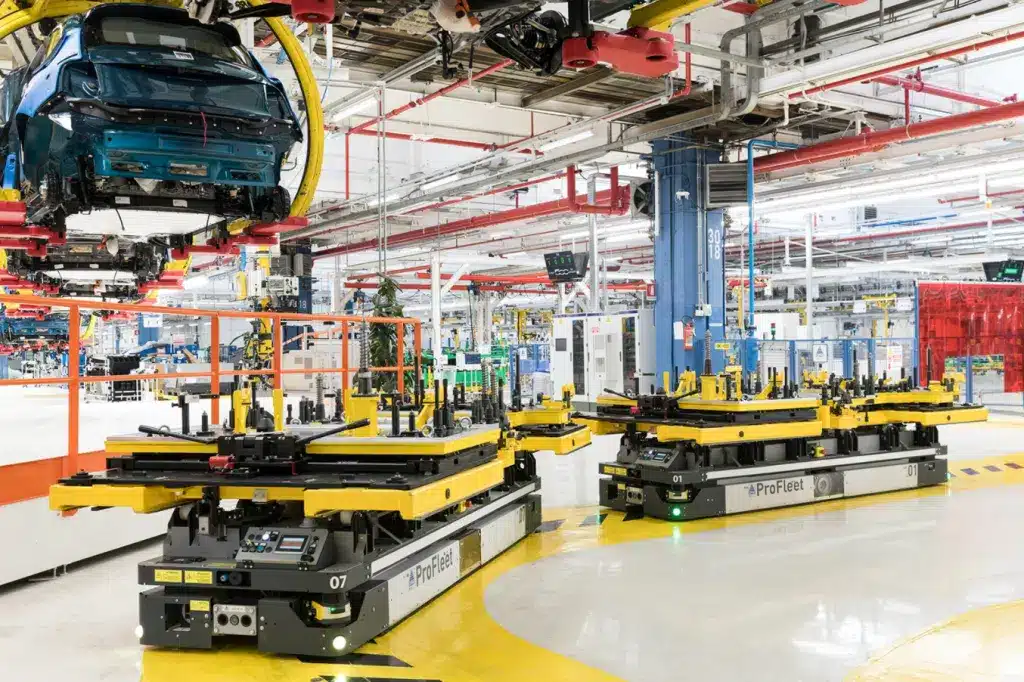Last edit: 01/08/2023

ISO 3691-4:2020 is the type-C standard of driverless industrial trucks. Examples of driverless industrial trucks (trucks of ISO 5053-1) can also be known as: “automated guided vehicle”, “autonomous mobile robot”, “bots”, “automated guided cart”, “tunnel tugger”, “under cart”, etc.
The standard has not yet been harmonized with the Machinery Directive, due to some aspects of its risk analysis in contrast with other standards already harmonized. Unlike some harmonized standards, ISO 3691-4 accepts very high-speed limits and it proposes the emergency pushbutton as a risk reduction measure.
Annex A establishes minimum requirements for the preparation of the zones so that the truck(s) can safely operate. These are the zones and the main prescriptions:
OPERATING ZONE: defined area in which a truck operates, with a minimum clearance of 0,5 m wide for a height of 2,1 m provided on both sides of the path. This shall be measured between the path and adjacent fixed structures along the path.
OPERATING HAZARD ZONE: area of the operating zone in which a person can be exposed to a hazard. This is zone of inadequate clearance or a zone which cannot be protected by personnel detection. In this operating hazard zone, the truck speed shall be in accordance with Table A.1 and Table A.2 and the truck shall emit additional acoustical and/or optical warnings. If there is inadequate clearance and no pedestrian escape route of at least 0,5 m wide and 2,1 m high, then personnel detection means shall be active to ensure detection of persons to within 180 mm between edge of safety fields of ESPE and surrounding objects in order to check this zone is free of persons. If the personnel detection function cannot be implemented, an emergency stop device or a stopping device, shall be installed within 600 mm from the hazardous point on the truck (e.g. point of contact on or with the truck or cause of entrapment) or in the workplace.
RESTRICTED ZONE: physically separated space in which only authorized persons are permitted to enter. This is a zone of inadequate clearance and that cannot be protected by personnel detection means according. In the restricted zone, the truck speed shall be in accordance with Tables A.1 and A.2 and the truck shall emit additional audible and/or optical warnings. Where the truck speed is above 1,2 m/s, most of the requirements of the confined zone are applicable.
CONFINED ZONE: truck operating space in which the risk reduction is provided by perimeter safeguarding. This is a zone where the personnel detection means may be omitted and where any speed is allowed. An interlocking device shall stop the truck when opening the door.